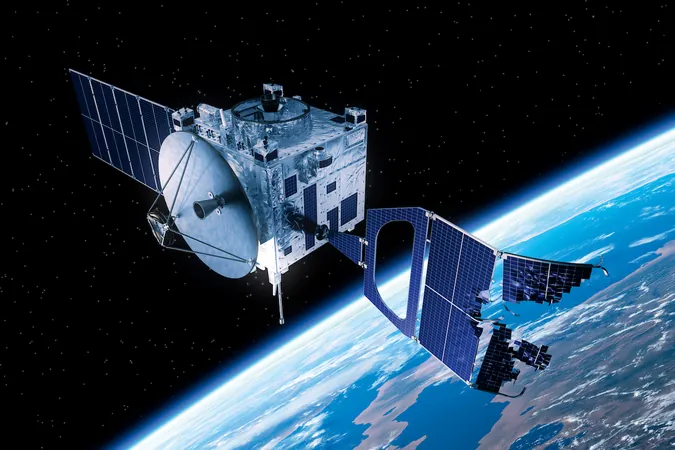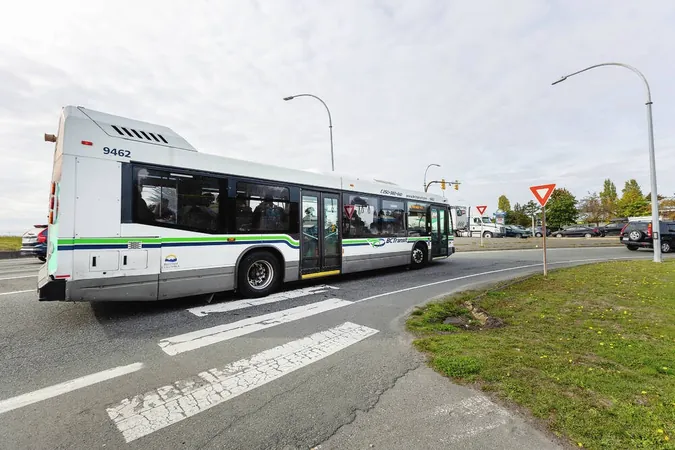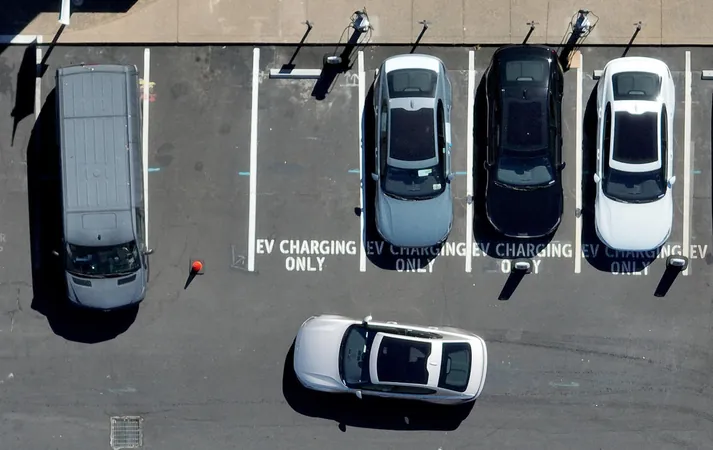
Is a Satellite Collision Doomsday Just Around the Corner? Experts Sound the Alarm!
2024-10-06
As we rush headlong into a future dominated by satellite networks, experts warn that an alarming reality is unfolding in space. In the first half of 2024 alone, SpaceX’s Starlink constellation executed nearly 50,000 collision-avoidance maneuvers, highlighting an ominous trend: the sky has never been more crowded, and the risk of satellite collisions is escalating dramatically.
With our dependence on satellites for telecommunications, navigation, and climate monitoring, the stakes have never been higher. A catastrophic collision could not only obliterate satellites but could also cripple essential services that we have come to rely on. This concern is echoed by Andy Lawrence, Regius Professor of Astronomy at the University of Edinburgh, who compares the situation to a slow-motion disaster. "It's not a single catastrophic event we should fear; it's the gradual worsening of conditions that could lead to chaos," he warns, likening this to the ‘boiling frog’ scenario where danger isn’t perceived until it’s too late.
The physics of satellite movement is sobering: to successfully orbit Earth, a satellite must travel at a minimum speed of 7.8 km/s (4.8 miles/s). At these velocities, even a slight impact can unleash massive energy, destroying the satellites involved and creating vast clouds of debris that pose further threats to other orbiting bodies. The 2009 collision between the operational Iridium 33 and the defunct Russian Cosmos 2251 serves as a chilling reminder, ejecting over 2,000 pieces of trackable debris into orbit.
Currently, there are over 13,000 satellites in space, with around 10,000 actively functioning. Recent near misses further underline this crisis; in January 2023, the decommissioned IRAS satellite came alarmingly close to America’s GGSE-4 satellite, which has been disabled since 1972. Just a month later, NASA's non-manoeuvrable TIMED satellite narrowly avoided a defunct Russian satellite, leaving scientists to watch in helpless anticipation.
The implications of these potential collisions go beyond mere inconvenience. As Lawrence suggests, a loss of vital services—such as the ability to watch major sporting events or critical military communications—could prompt public outcry and demand for action. "It’s only when people feel the impact directly that they will recognize the severity of the situation," he notes.
Since the launch of Sputnik in 1957, the presence of satellites has fundamentally changed our lives. However, the exponential rise in satellite numbers has exceed previous safety measures. The competition for space-based internet services has led to thousands of satellites being launched into low-Earth orbit to achieve global coverage. SpaceX's Starlink dominates this field with over 7,000 satellites deployed and a sophisticated collision avoidance system that activates automatically if a collision risk surpasses 1 in 100,000. However, concerns loom that as satellite numbers grow, even this advanced technology may become overwhelmed.
Dr. Jonathan McDowell of the Harvard-Smithsonian Center for Astrophysics cautions, "We are operating at the edge of what is safe." As such, the need for robust guidelines and immediate action is paramount.
Moreover, simply disposing of old satellites poses its own environmental challenges. Current protocols mandate that defunct satellites must either be removed or burned up upon reaching the end of their operational lives. However, this might just exacerbate atmospheric pollution, releasing harmful materials into Earth’s upper atmosphere.
In a shocking incident earlier this year, a piece of debris from the International Space Station survived re-entry, damaging a house in Florida but, thankfully, causing no injuries.
The proliferation of satellites has also begun to obscure our understanding of the cosmos. As astronomers notice streaks marring the images of distant celestial bodies, they face an uphill struggle in their quest to study the universe. Recent studies indicate that the latest generation of Starlink satellites may produce radio signals up to 32 times brighter than their predecessors—significantly interfering with astronomical research.
As we inch closer to an unpredictable future in space, the challenge lies in balancing the benefits of industrializing space with the preservation of astronomical integrity and the safety of our celestial neighborhood. Brace yourself—the countdown to a satellite collision catastrophe has already begun!









 Brasil (PT)
Brasil (PT)
 Canada (EN)
Canada (EN)
 Chile (ES)
Chile (ES)
 España (ES)
España (ES)
 France (FR)
France (FR)
 Hong Kong (EN)
Hong Kong (EN)
 Italia (IT)
Italia (IT)
 日本 (JA)
日本 (JA)
 Magyarország (HU)
Magyarország (HU)
 Norge (NO)
Norge (NO)
 Polska (PL)
Polska (PL)
 Schweiz (DE)
Schweiz (DE)
 Singapore (EN)
Singapore (EN)
 Sverige (SV)
Sverige (SV)
 Suomi (FI)
Suomi (FI)
 Türkiye (TR)
Türkiye (TR)